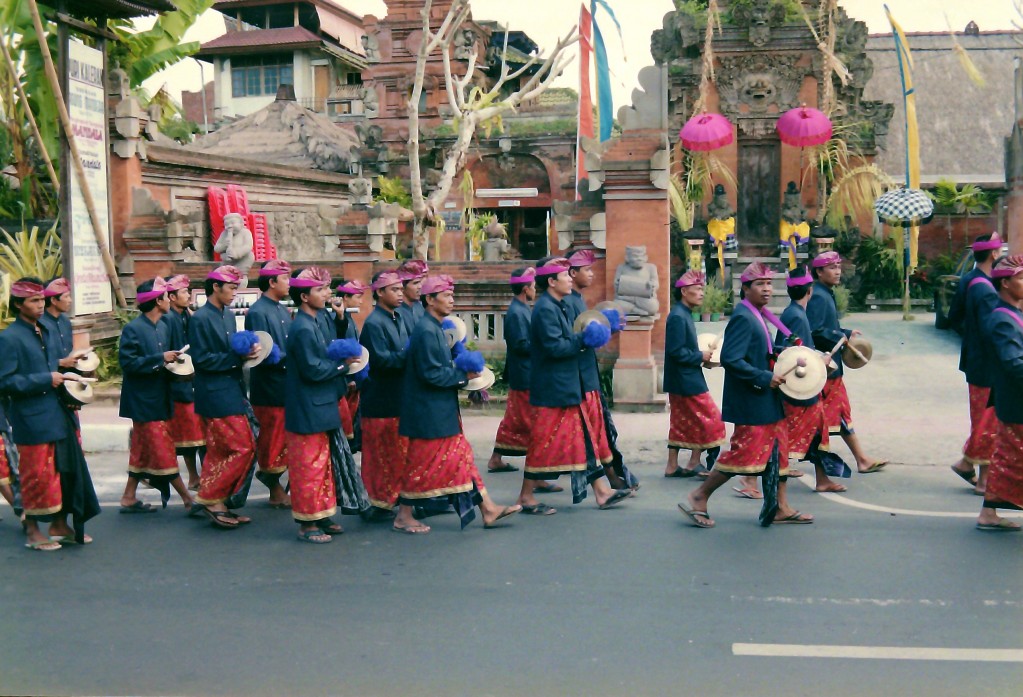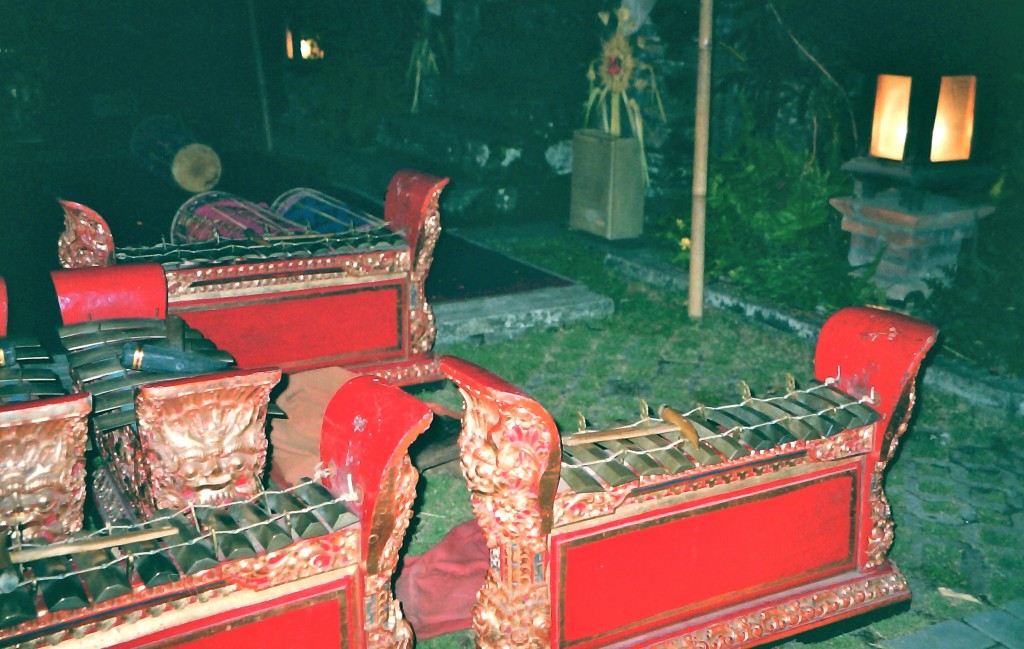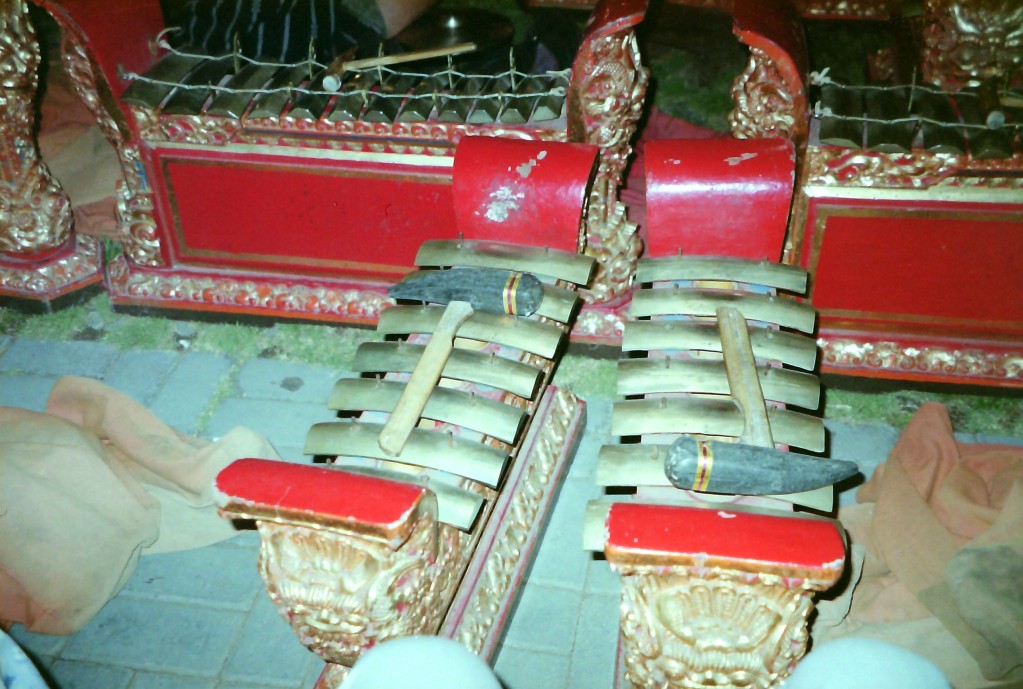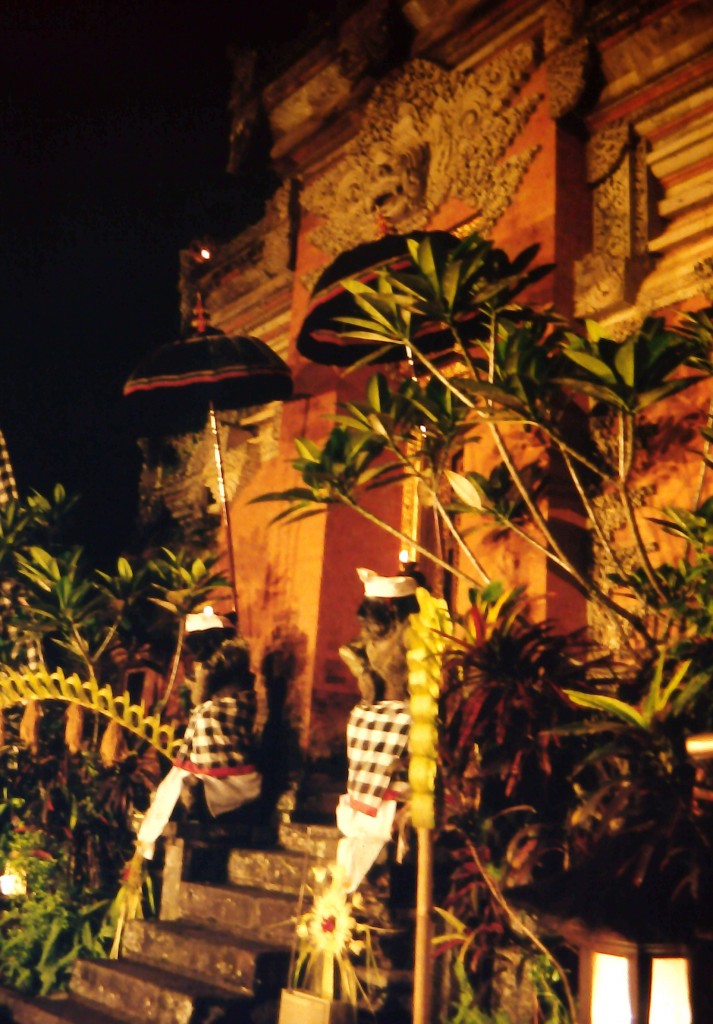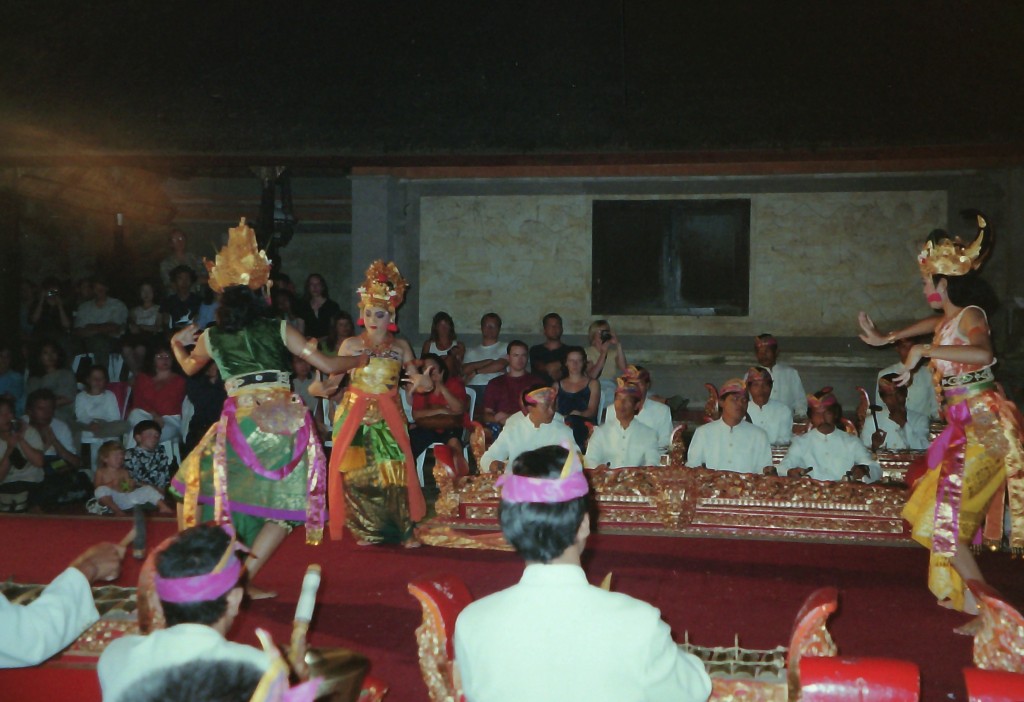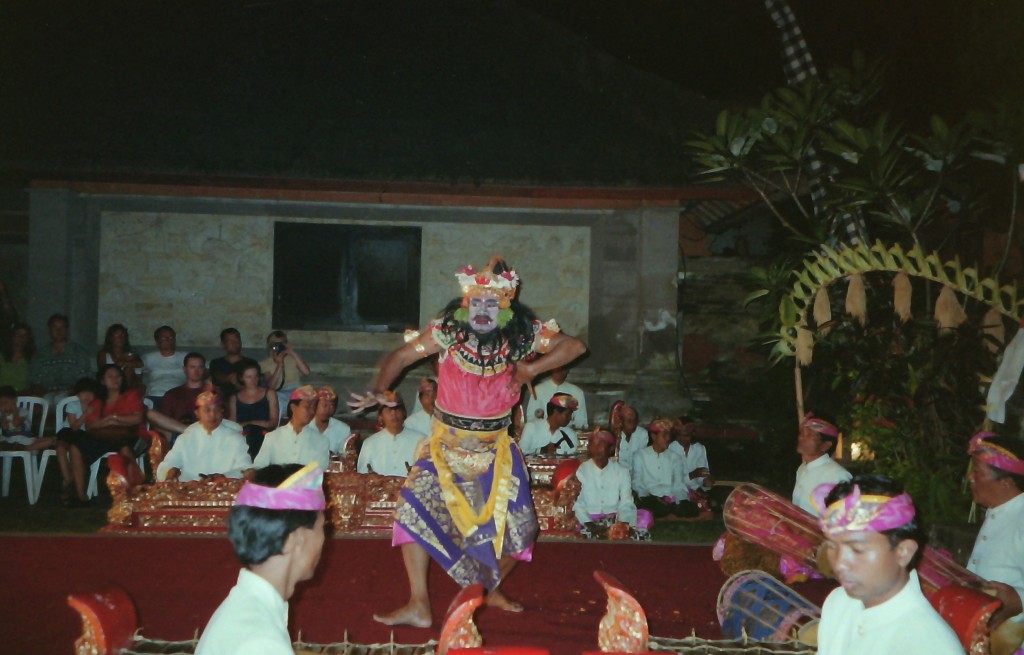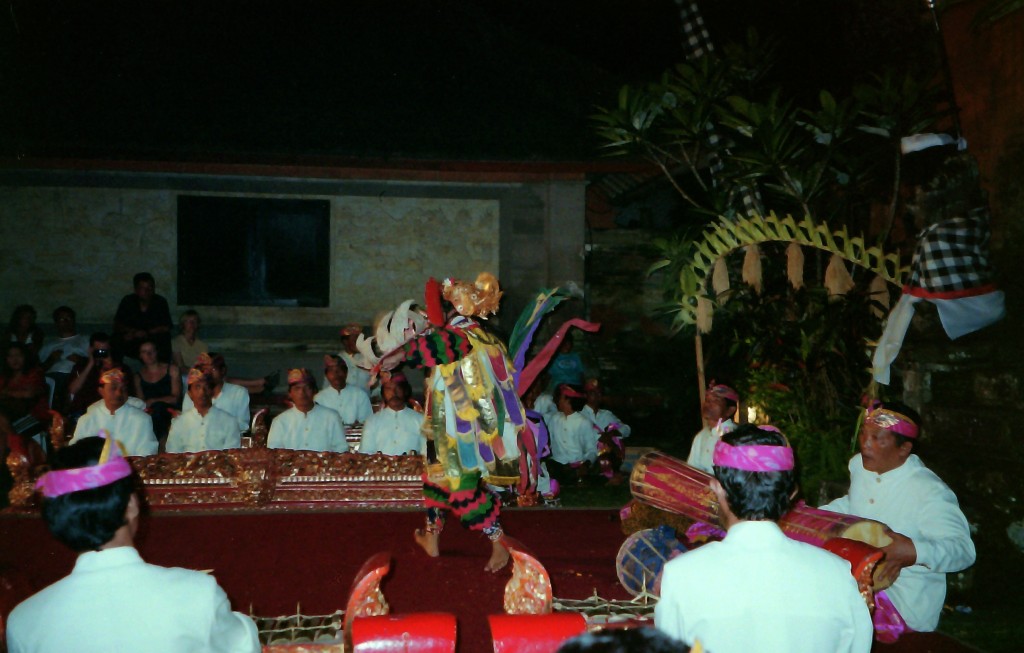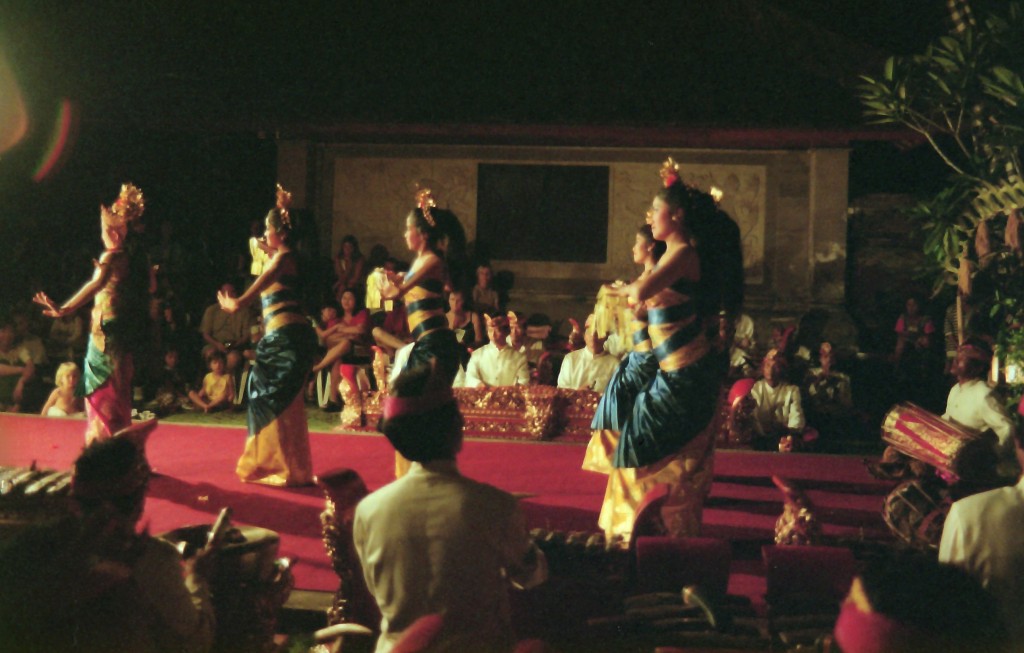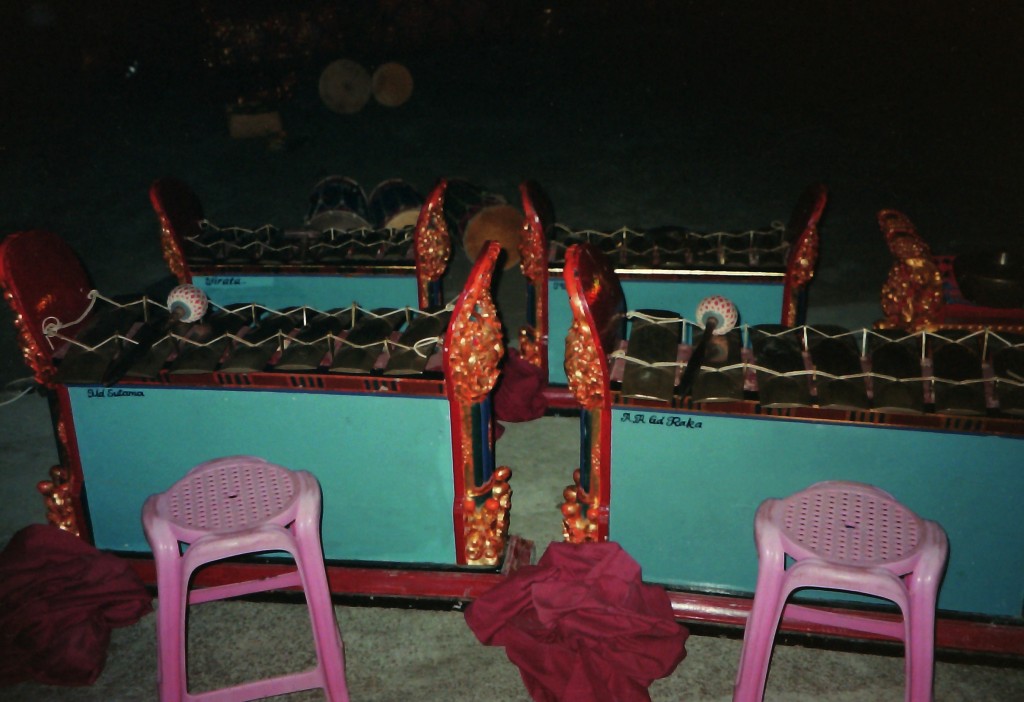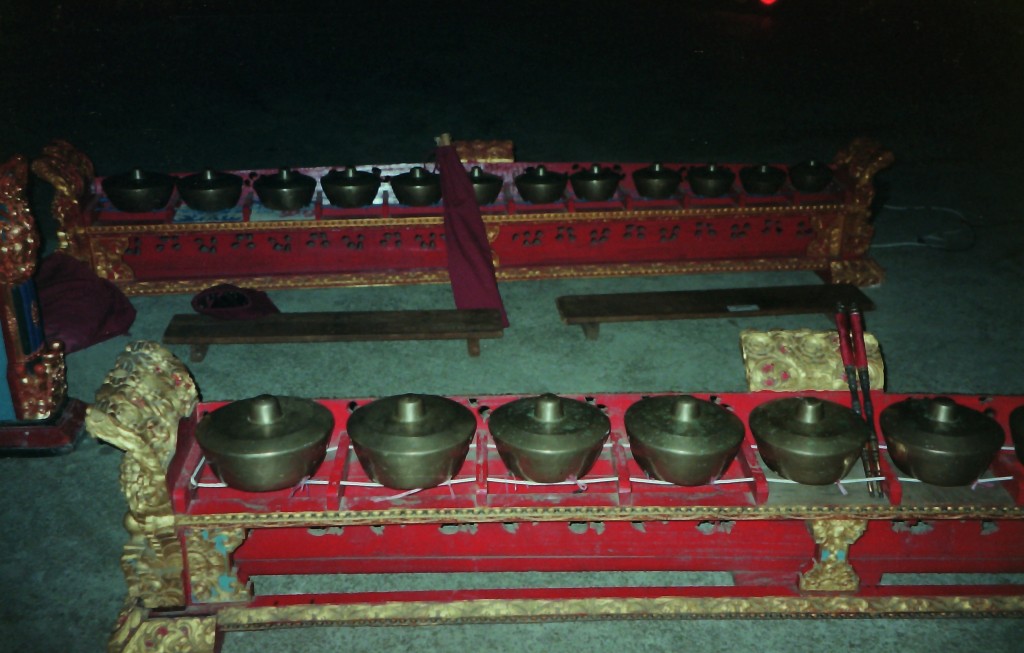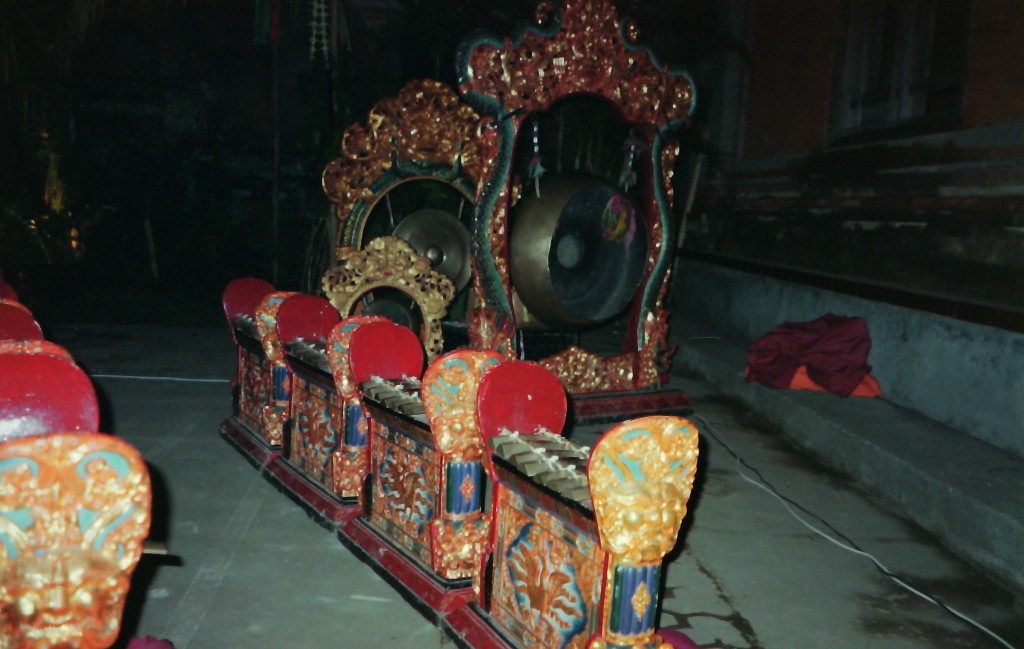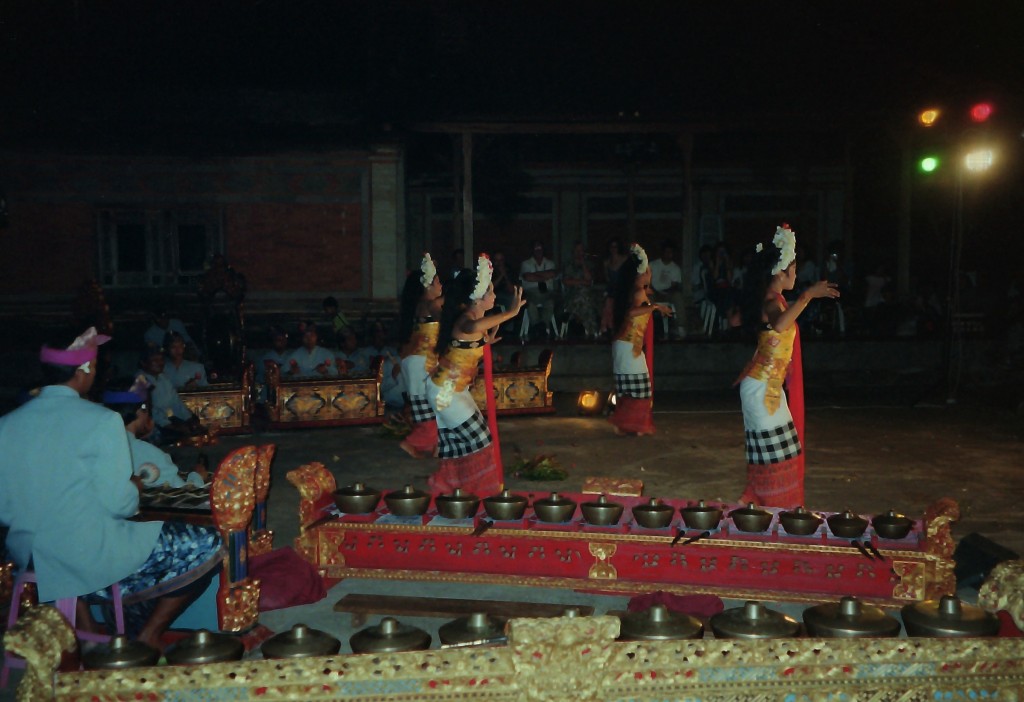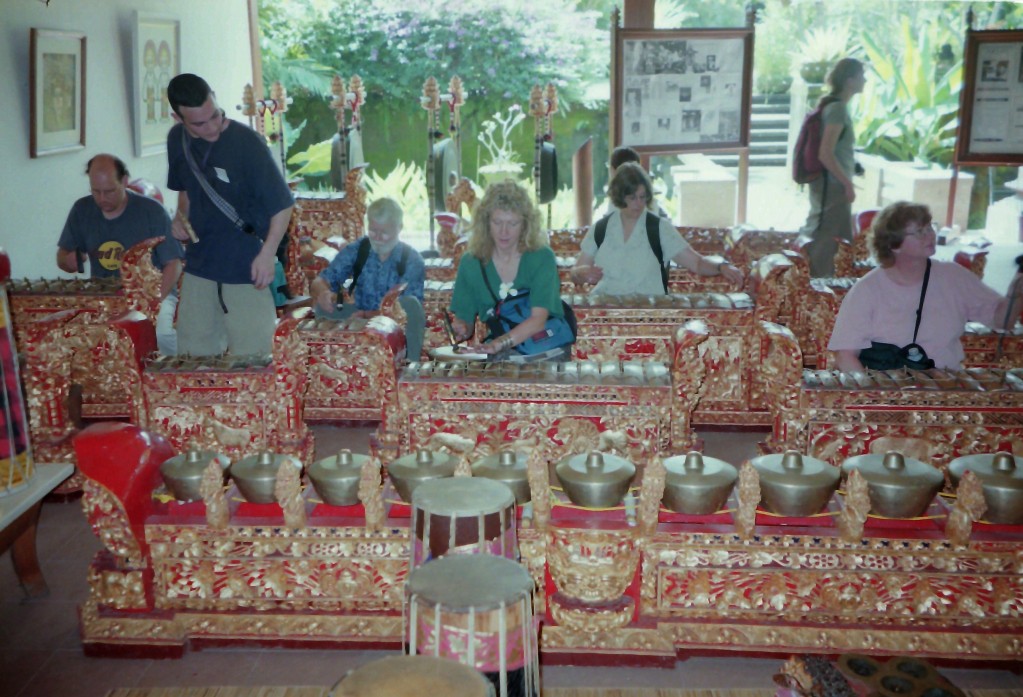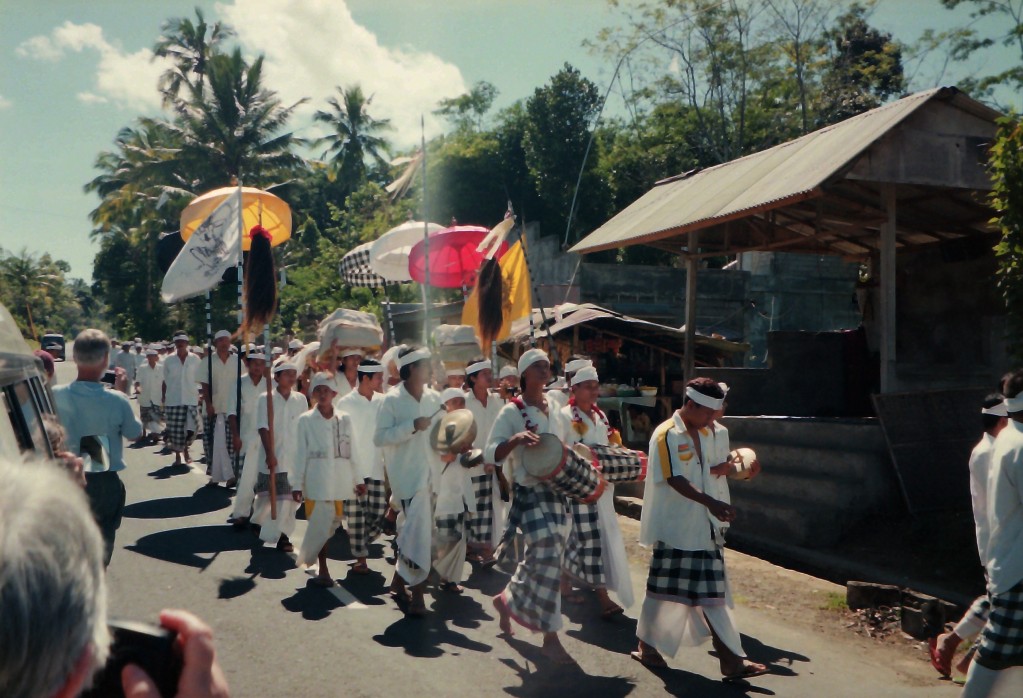The term “Gamelan” refers to the group of instruments used, much like the word “Orchestra” or “Band”. The instruments themselves are mostly percussion idiophones and membranophones, although winds (Suling – bamboo flute) and strings (Rebab – a two-string spike fiddle) are also found. There are about twenty-five different types of Gamelan of various sizes and instrument combinations in Bali, and each village owns at least one gamelan if not several.
May 31, 1999: Belaganjur (“Marching Gamelan”), Peliatan, Bali
June 1, 1999: Ramayana Ballet at Ubud Palace, Bali – Semara Winagun, a combination of Gamelan Gong Kebyar, Gamelan Gong Gde, and Gamelan Semar Pegulingan.
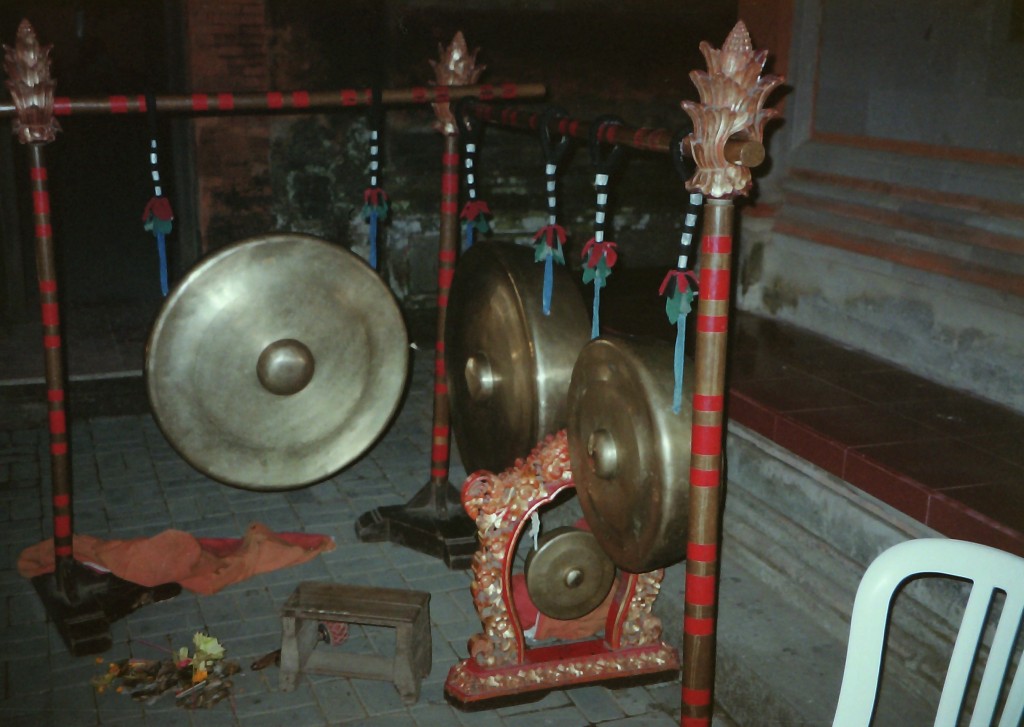 Gongs (largest two), Kempur, Kemong (smallest)
Gongs (largest two), Kempur, Kemong (smallest)
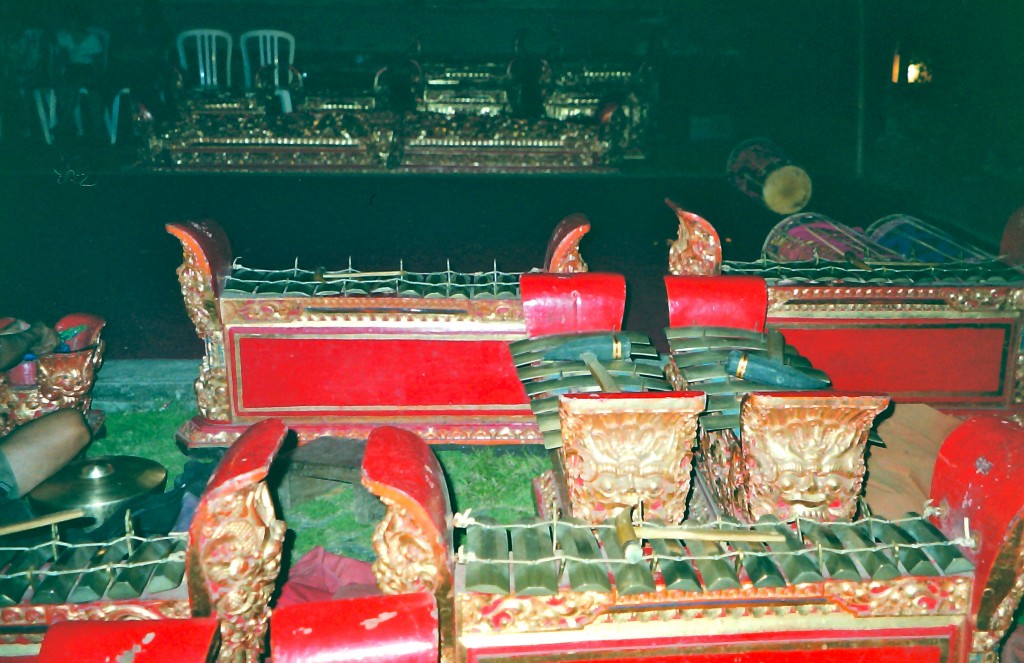 Gangsa Kantilans, Gangsa Pemades, Kendang (double headed drums)
Gangsa Kantilans, Gangsa Pemades, Kendang (double headed drums)
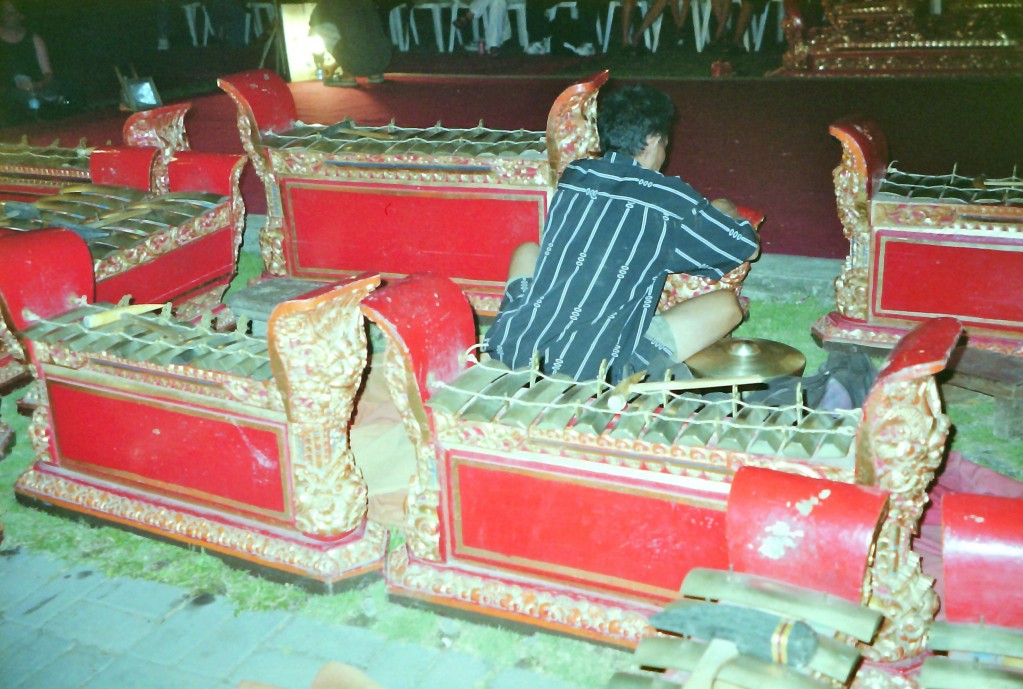 Ugal (largest metallophone – top center), Kempli, Gangsa Kantilan, Gangsa Pemade
Ugal (largest metallophone – top center), Kempli, Gangsa Kantilan, Gangsa Pemade
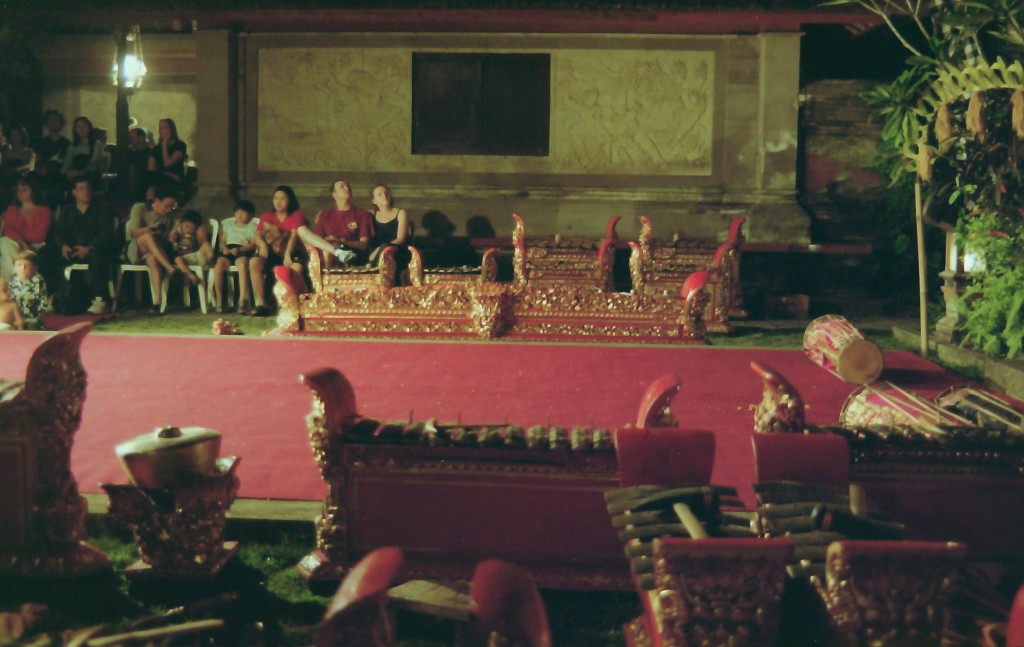 Top of photo: two Jegogans (back row right); not visible are two Calungs (back row left), Reong
Top of photo: two Jegogans (back row right); not visible are two Calungs (back row left), Reong
Three Drums: Kendang
Foreground: Kempli, Gangsa Kantilan, Gangsa Pemade
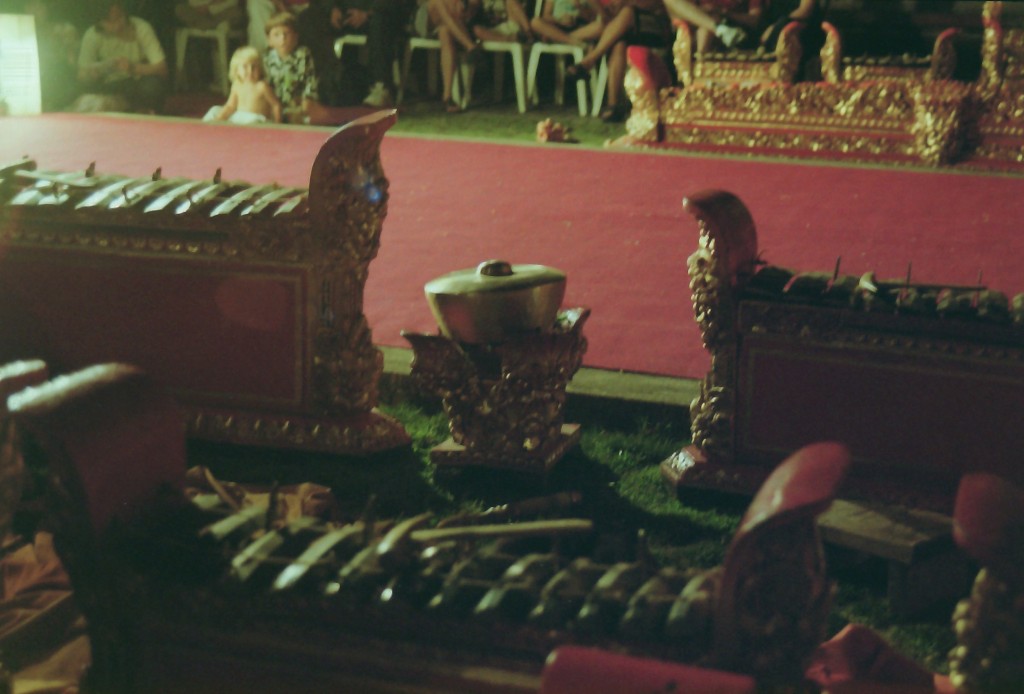 Kempli – the ensemble “Timekeeper”
Kempli – the ensemble “Timekeeper”
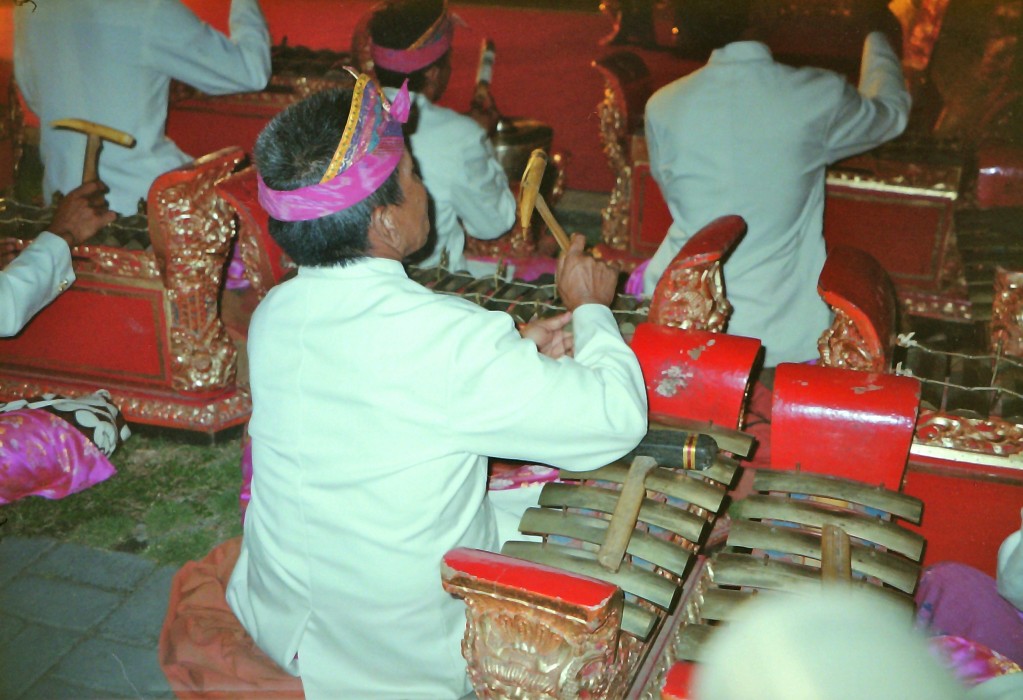 Players dampen the previous played tone with their left hand when a new note is struck.
Players dampen the previous played tone with their left hand when a new note is struck.
June 4, 1999: Legong Keraton and Barong Dances in Peliatan, Bali – Gamelan Semar Pegulingan
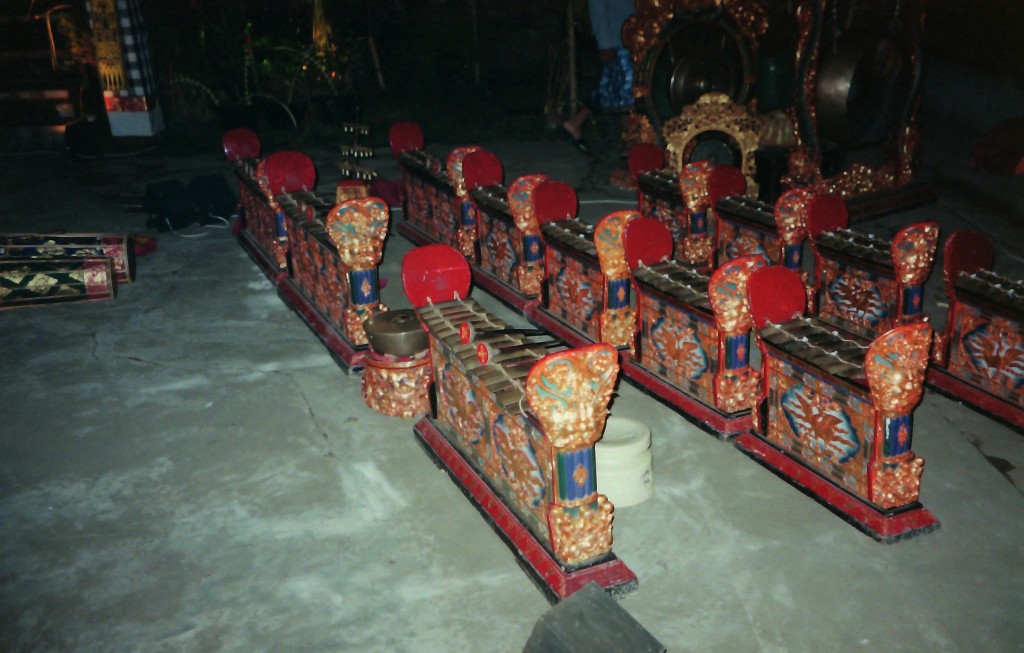 Kendang, Kempli; Metallophones small to large: Gangsa Pemade, Gangsa Kantilan, Calung; Gongs
Kendang, Kempli; Metallophones small to large: Gangsa Pemade, Gangsa Kantilan, Calung; Gongs
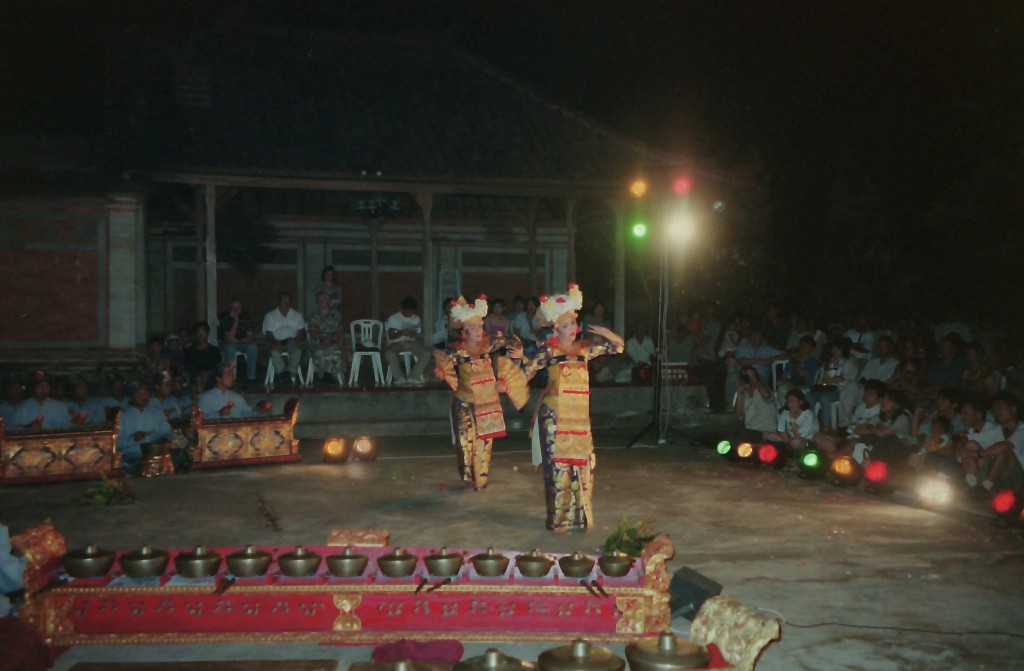 Legong Keraton (or Legong) is the classical dance of the princely courts of Bali, with origins in the south-central courts of Sukawati and Blahbatuh during the late 19th century. It features two identically dressed Legong dancers, and a similarly dressed Condong, or servant. The three perform all of the roles in the story. The Lasem story is the most popular, which tells of the kidnapping of a princess and her abductor’s confrontation by a bird of ill omen while on the way to do battle for his honor.
Legong Keraton (or Legong) is the classical dance of the princely courts of Bali, with origins in the south-central courts of Sukawati and Blahbatuh during the late 19th century. It features two identically dressed Legong dancers, and a similarly dressed Condong, or servant. The three perform all of the roles in the story. The Lasem story is the most popular, which tells of the kidnapping of a princess and her abductor’s confrontation by a bird of ill omen while on the way to do battle for his honor.
Legong dancers begin training as early as age five, and begin to perform between the ages of eight and twelve, retiring at the onset of puberty.
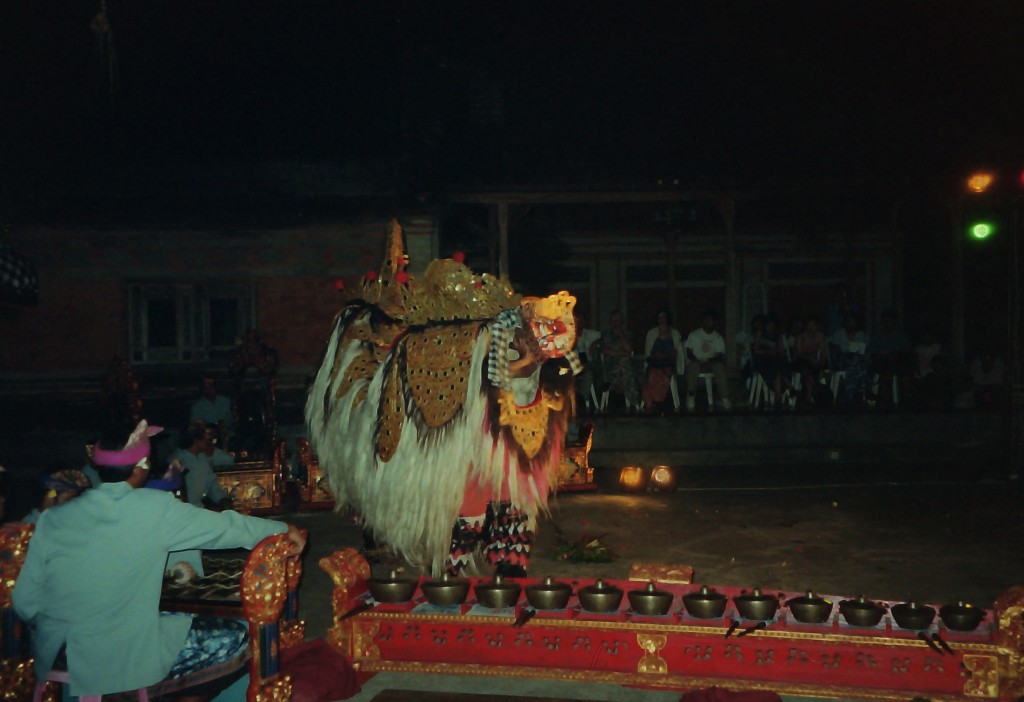 Barong – the protector of mankind and embodiment of good; in the Barong dance, the Barong battles Rangda, the witch or demon queen. A group of men are Barong’s supporters, each armed with a keris, the traditional sacred sword.
Barong – the protector of mankind and embodiment of good; in the Barong dance, the Barong battles Rangda, the witch or demon queen. A group of men are Barong’s supporters, each armed with a keris, the traditional sacred sword.
Barong followers
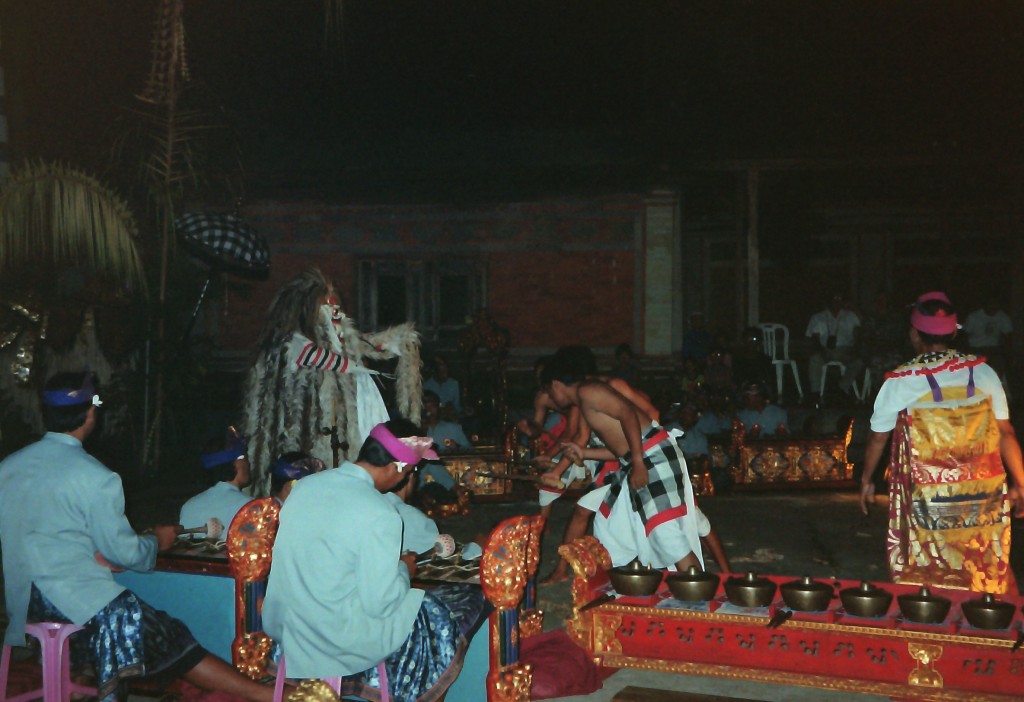 Rangda the witch or demon queen and the embodiment of evil
Rangda the witch or demon queen and the embodiment of evil
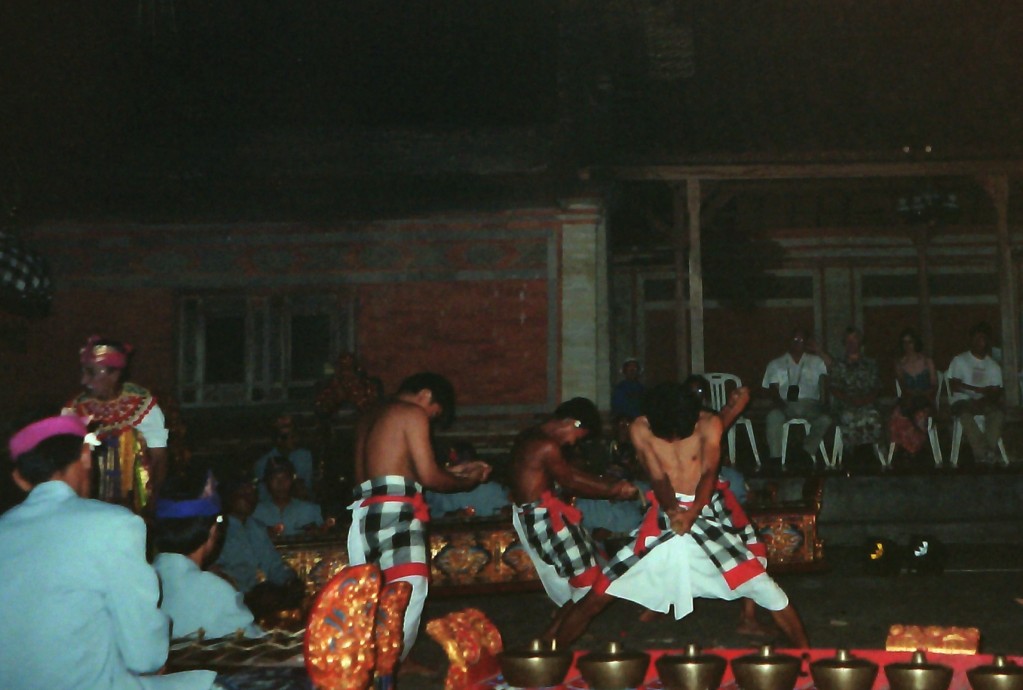 In battling Rangda, the men turn the Keris (daggers) on themselves, as a sign of devotion and the protection provided by the Barong, and are protected from injury due to the trance state which they have entered.
In battling Rangda, the men turn the Keris (daggers) on themselves, as a sign of devotion and the protection provided by the Barong, and are protected from injury due to the trance state which they have entered.
June 5, 1999: Gamelan Gong Kebyar at the Agung Rai Museum, Ubud, Bali
Gamelan Gong Kebyar instruments
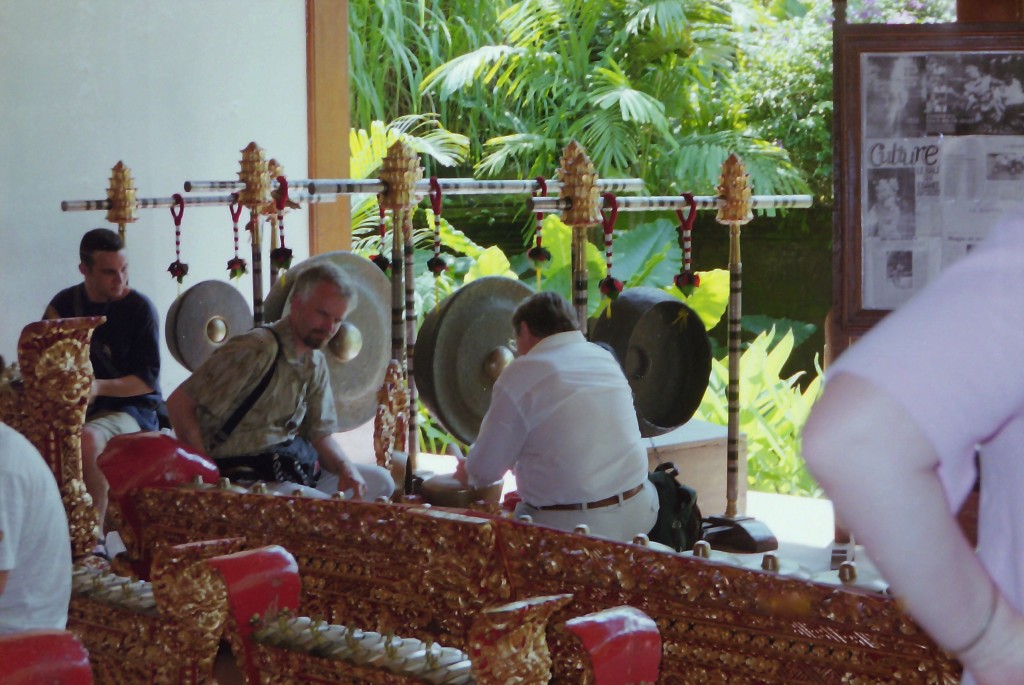 w/Alan Leech, Montana State University Professor
w/Alan Leech, Montana State University Professor
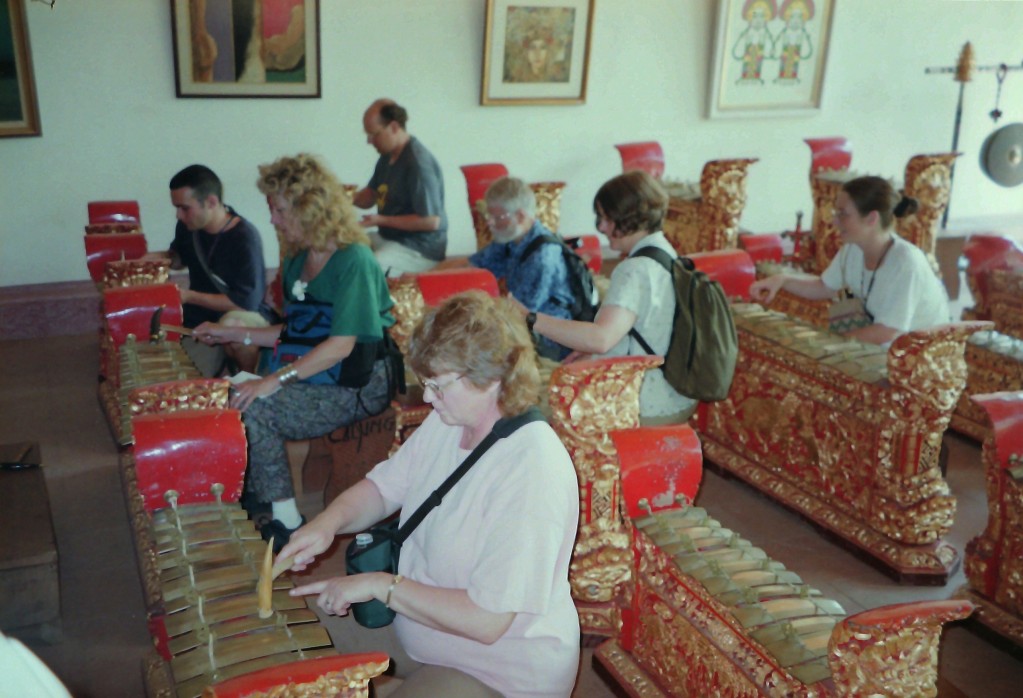 at the Agung Rai Museum of Art, Ubud
at the Agung Rai Museum of Art, Ubud
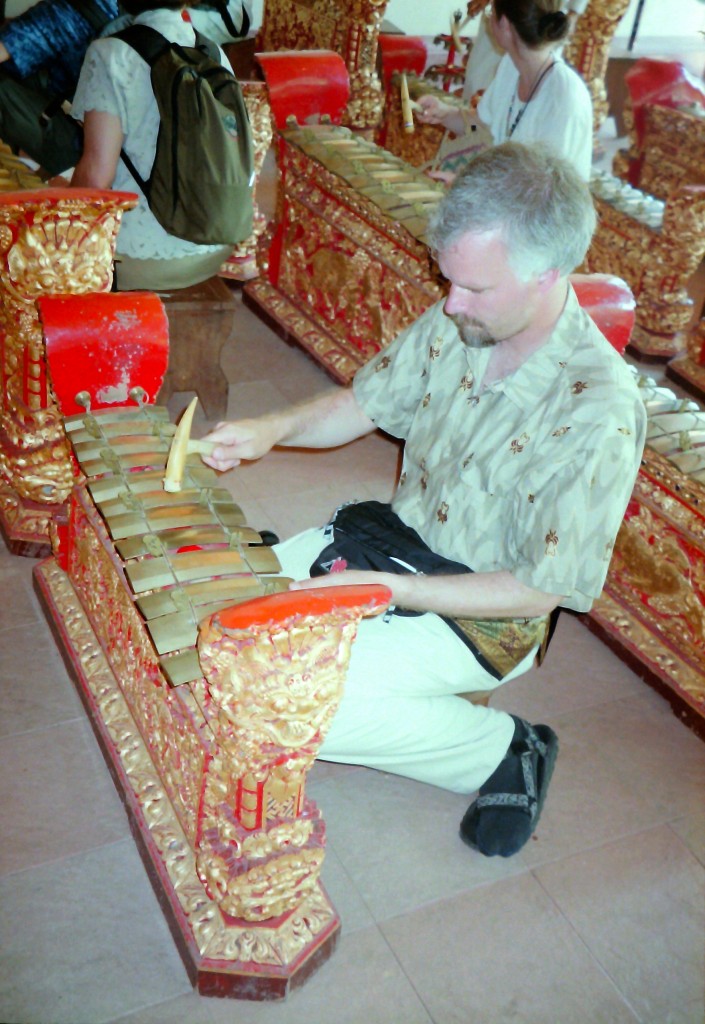 at the Agung Rai Museum of Art, Ubud
at the Agung Rai Museum of Art, Ubud
June 11, 1999: Belaganjur, on the road to Mt. Batur, Central Bali
June 12, 1999: Gamelan Gong Kebyar at SMKI
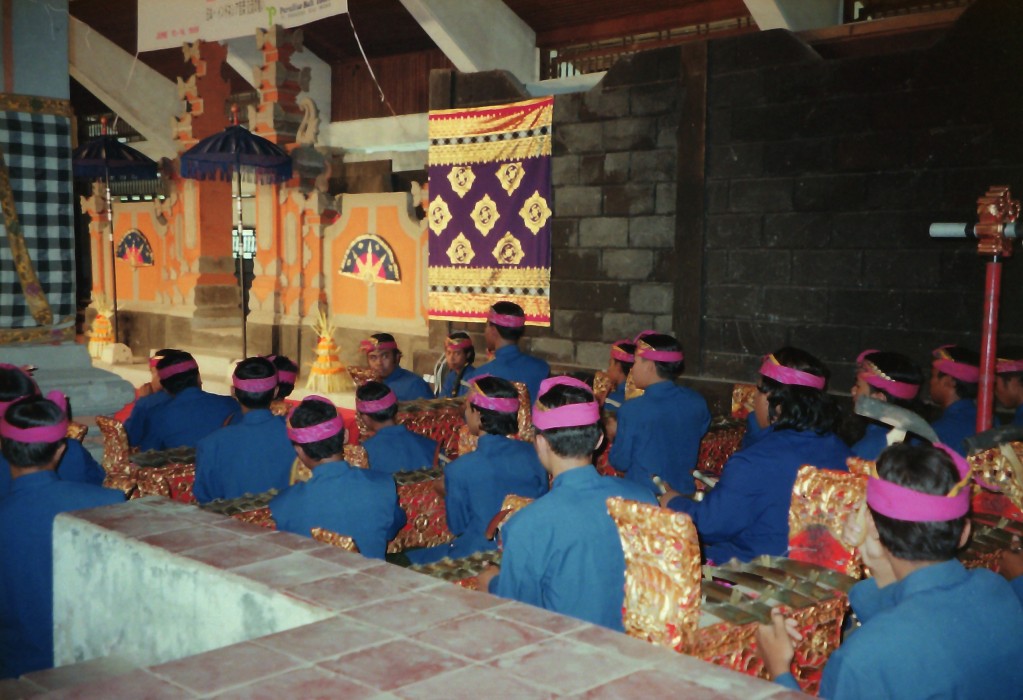 SMKI: High School of Performing Arts, Denpasar, Bali
SMKI: High School of Performing Arts, Denpasar, Bali
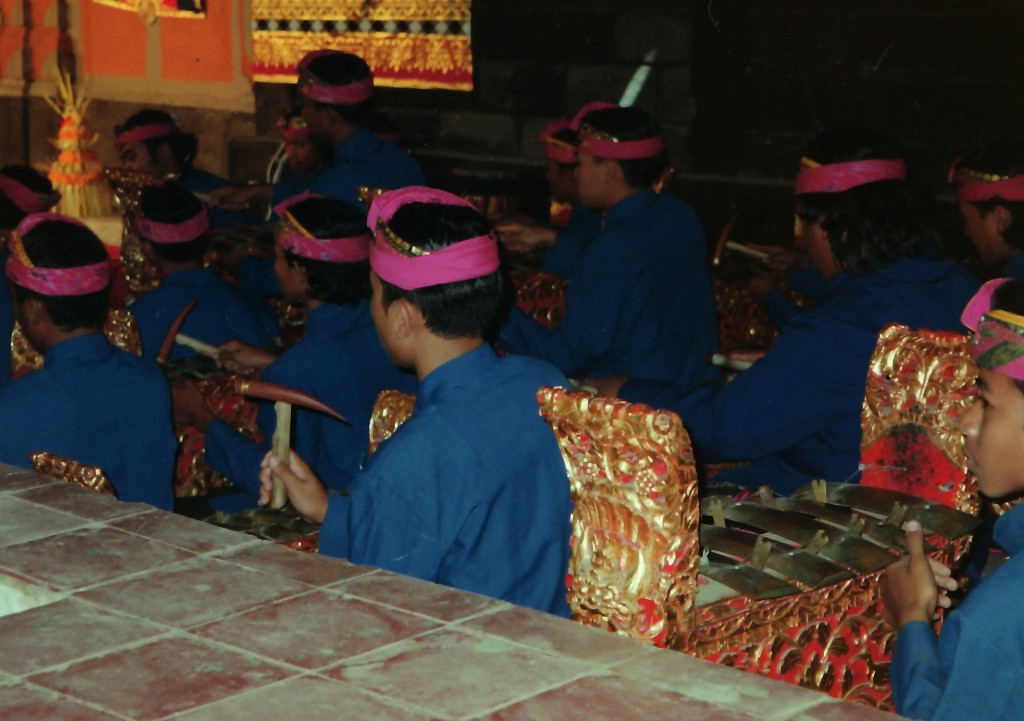 SMKI: High School of Performing Arts, Denpasar, Bali
SMKI: High School of Performing Arts, Denpasar, Bali
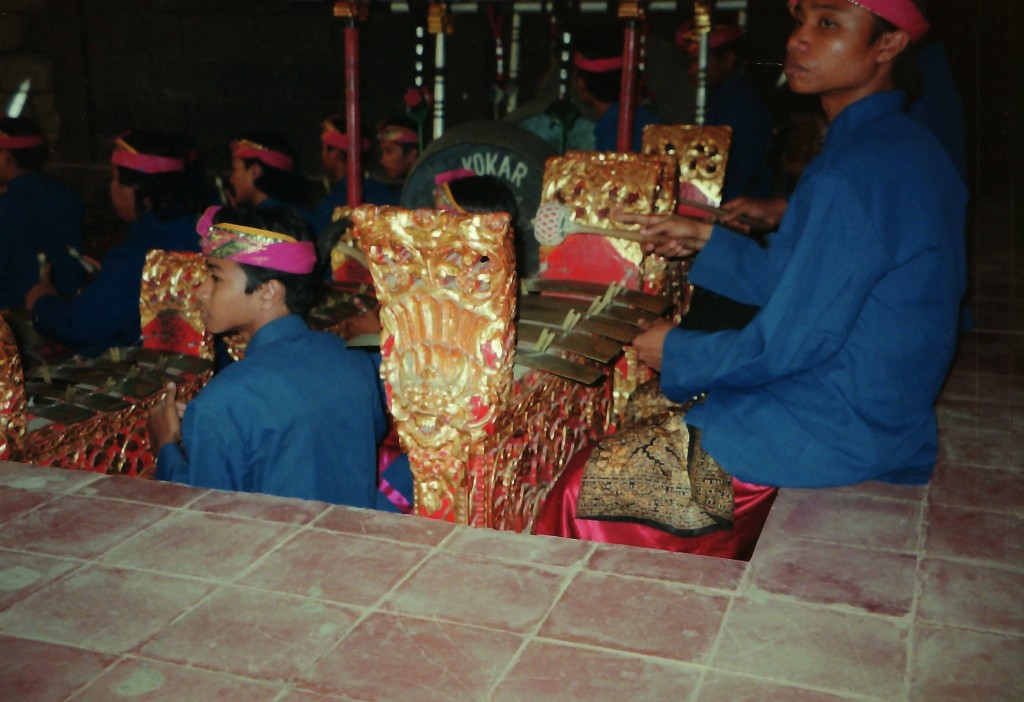 SMKI: High School of Performing Arts, Denpasar, Bali
SMKI: High School of Performing Arts, Denpasar, Bali
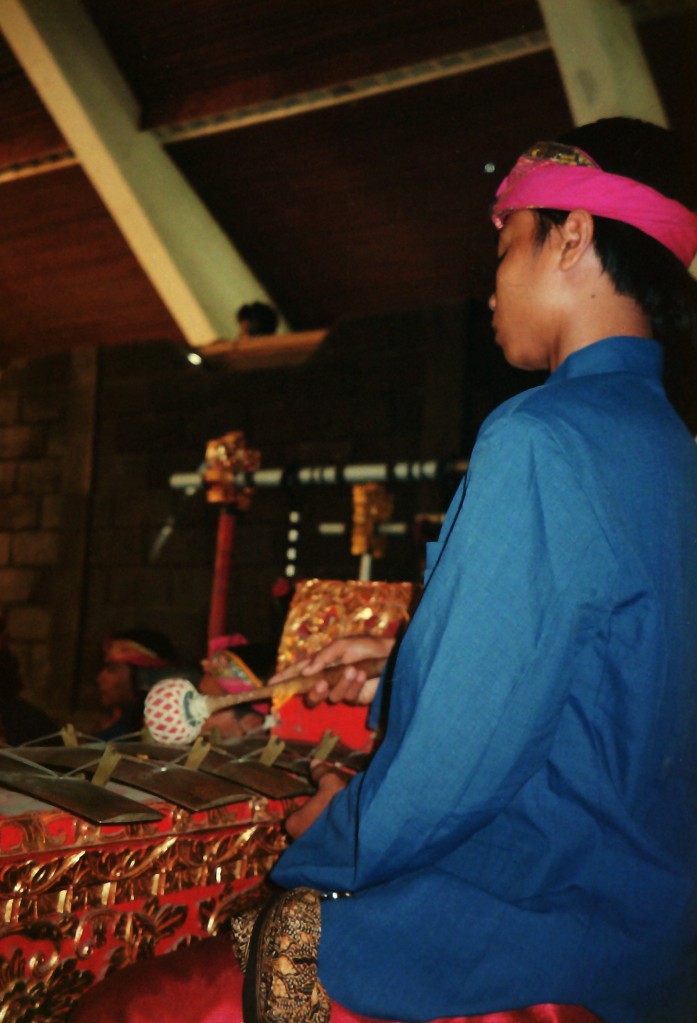 SMKI: High School of Performing Arts, Denpasar, Bali
SMKI: High School of Performing Arts, Denpasar, Bali
